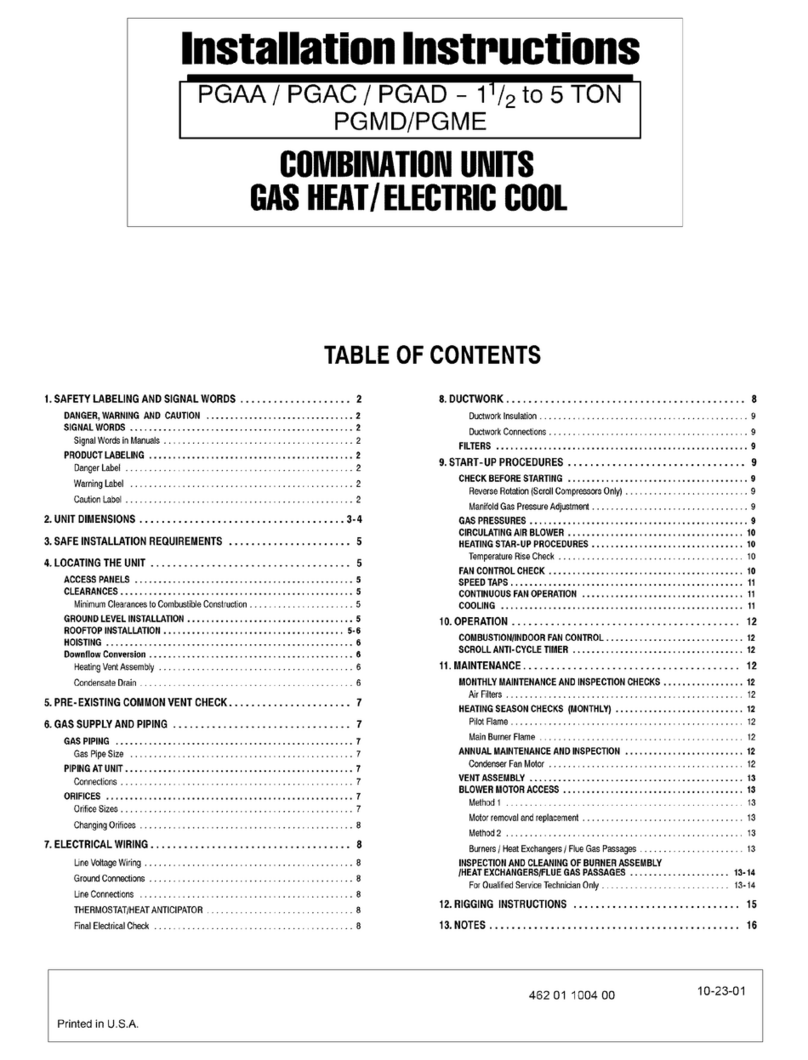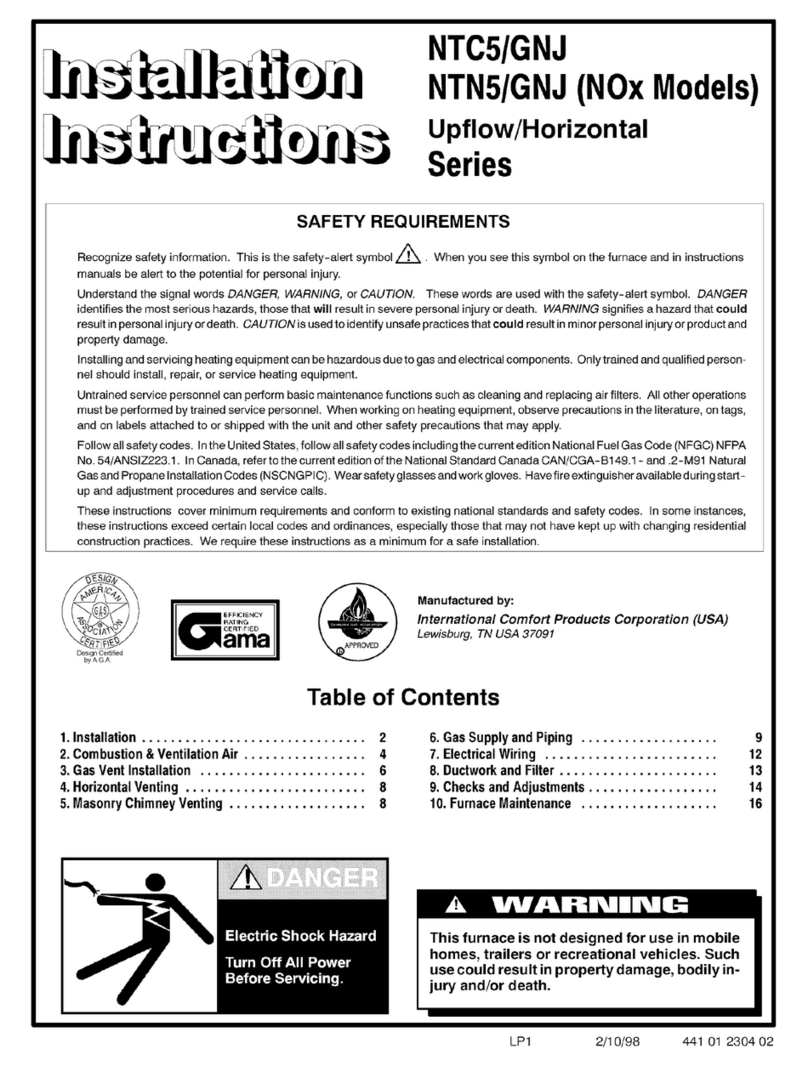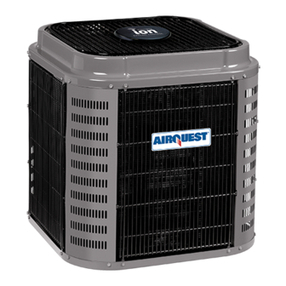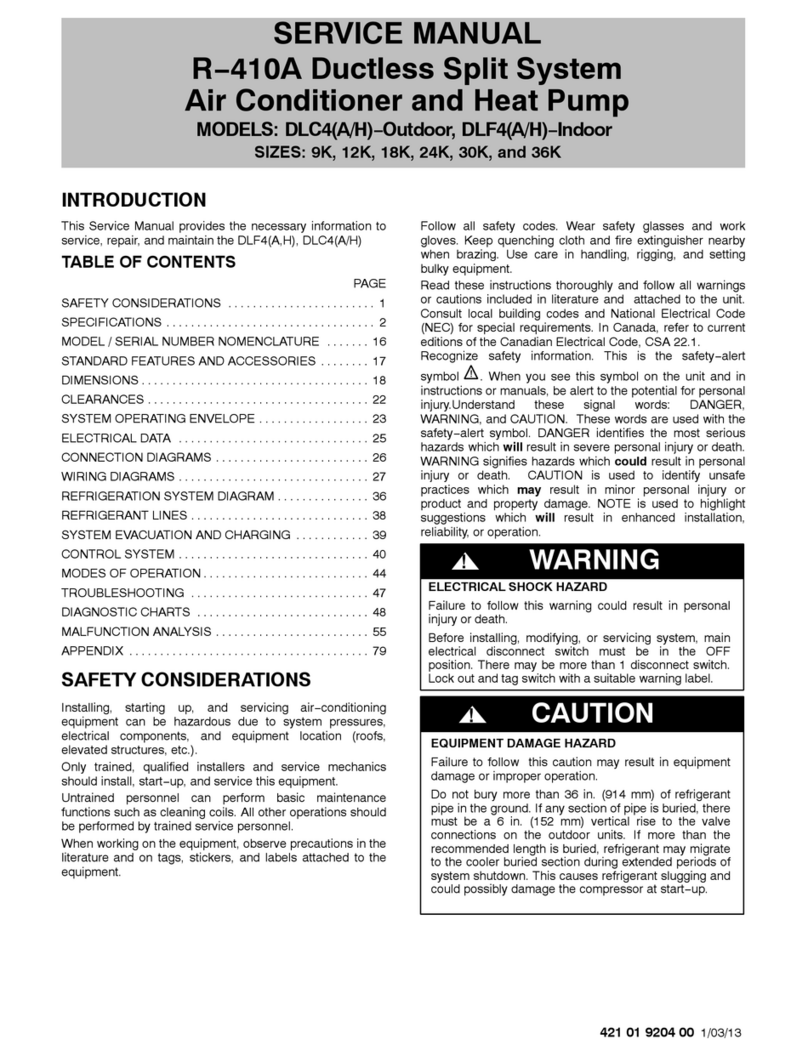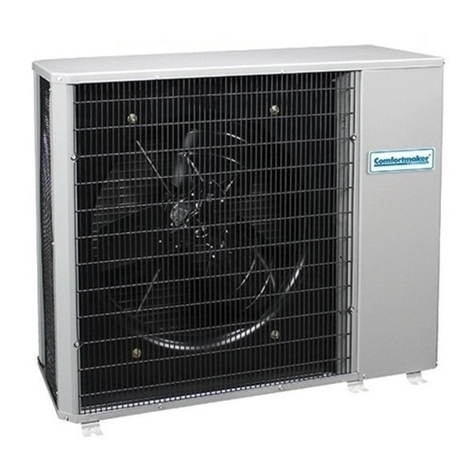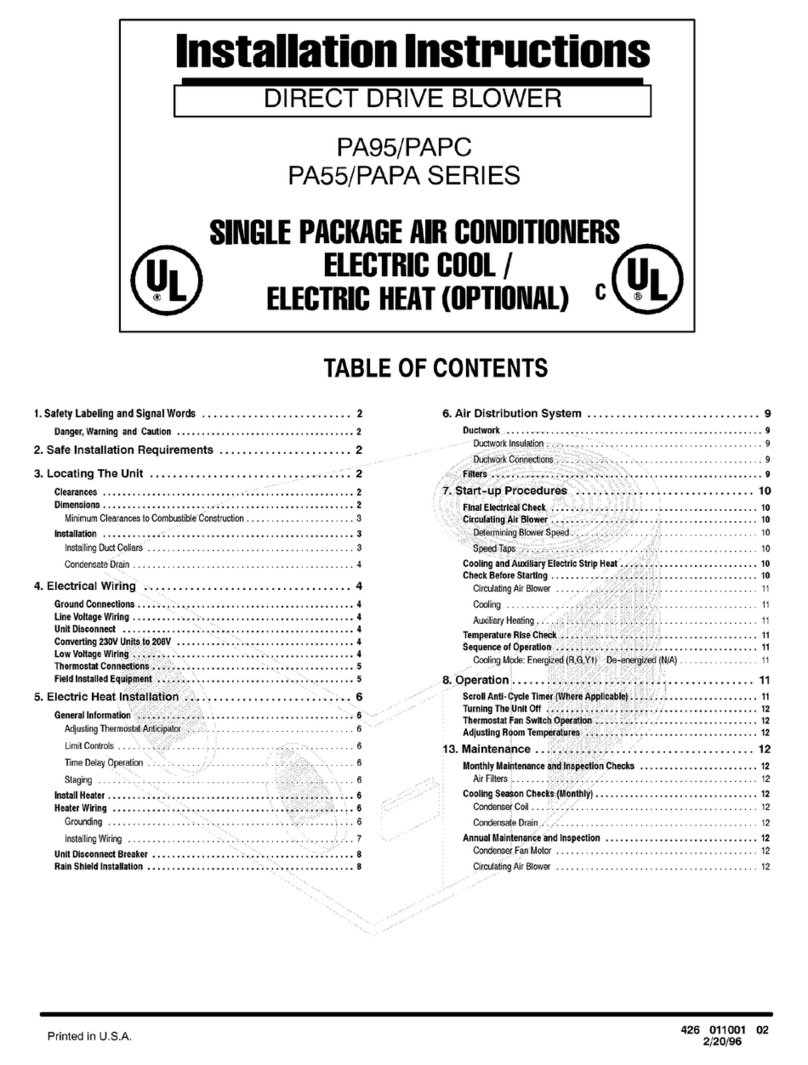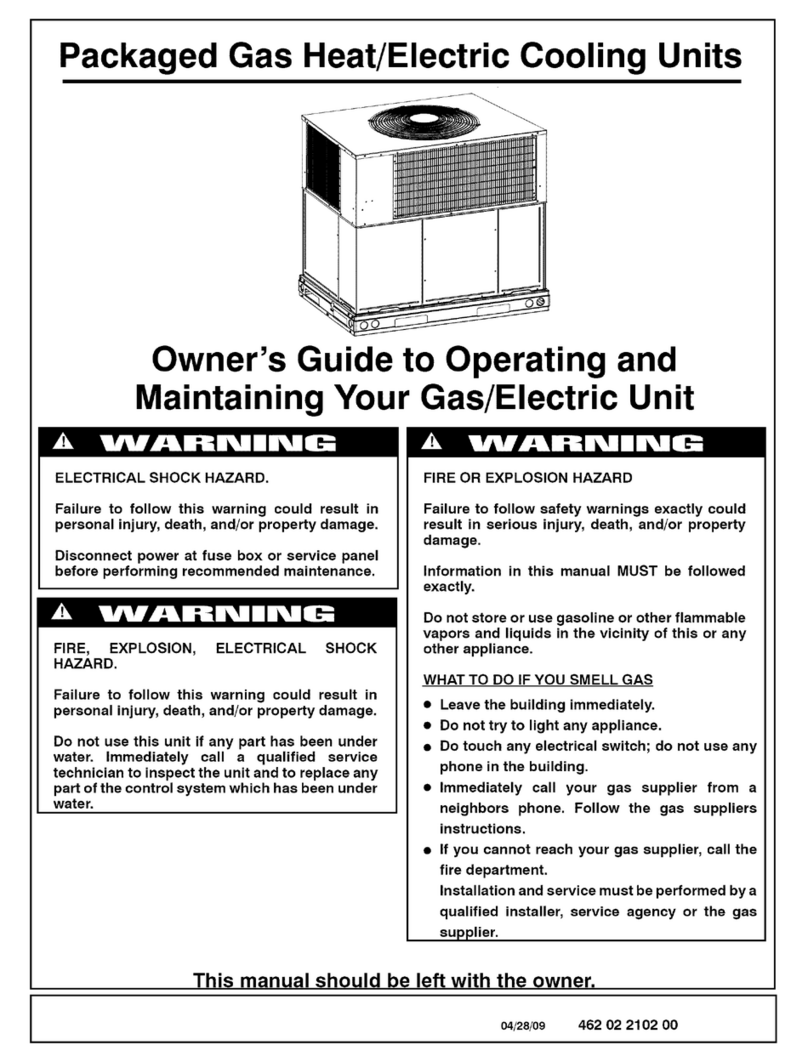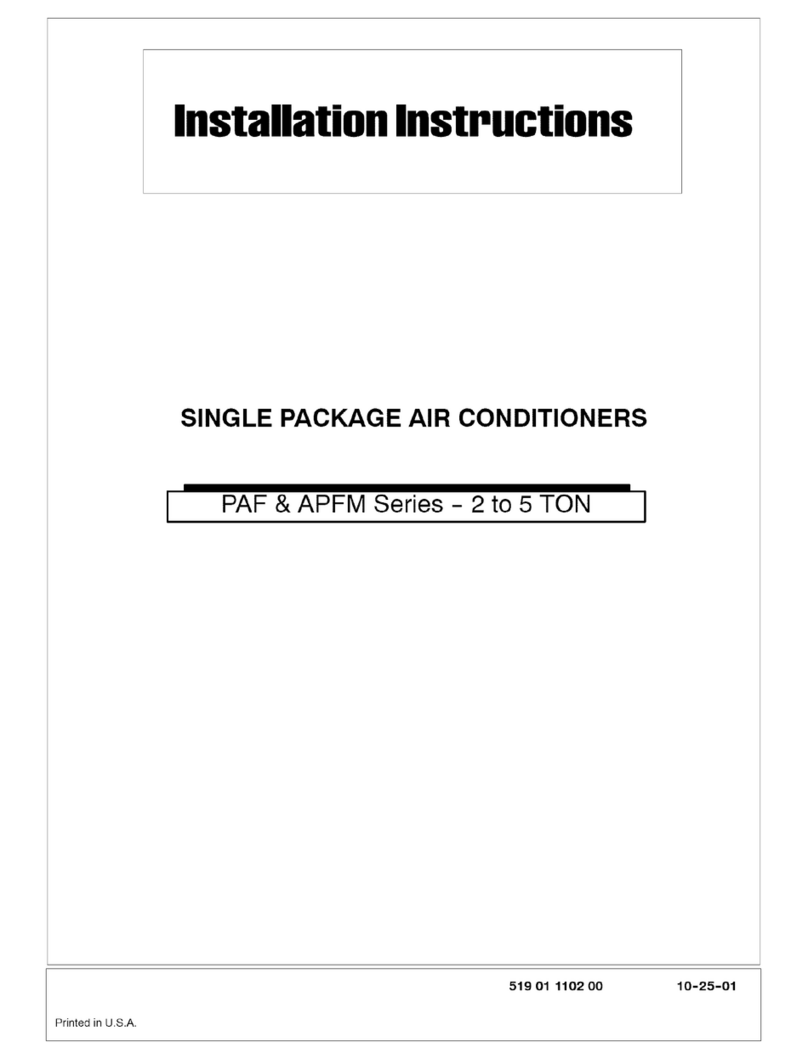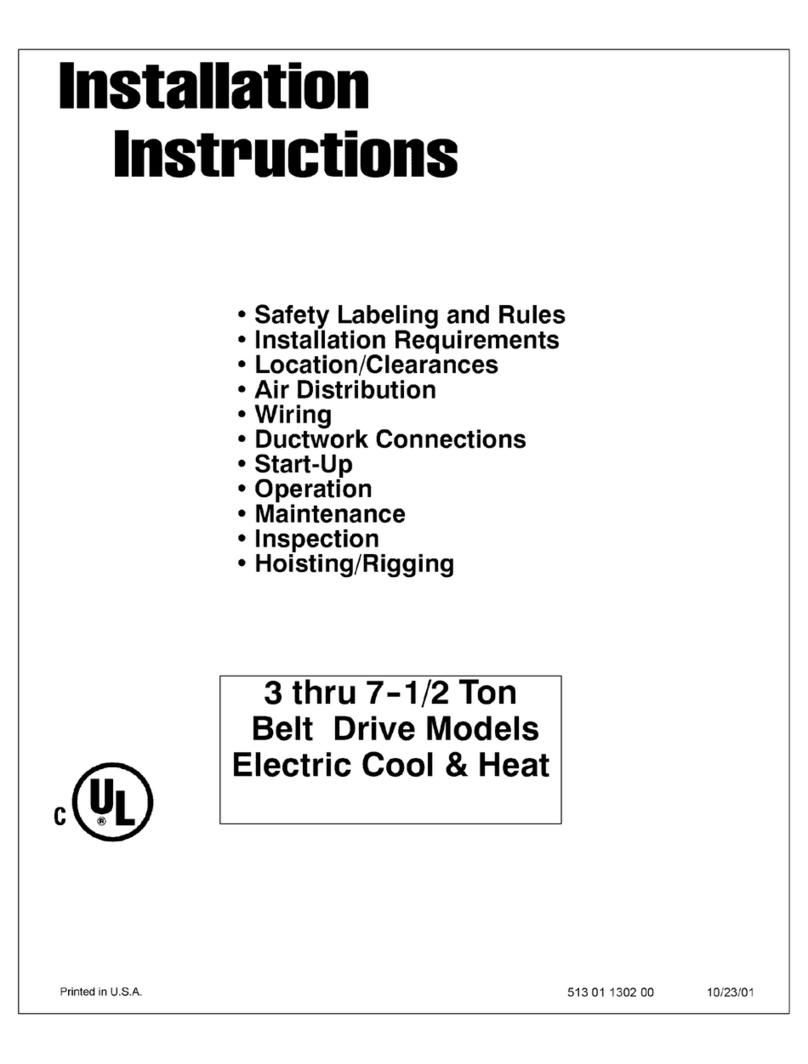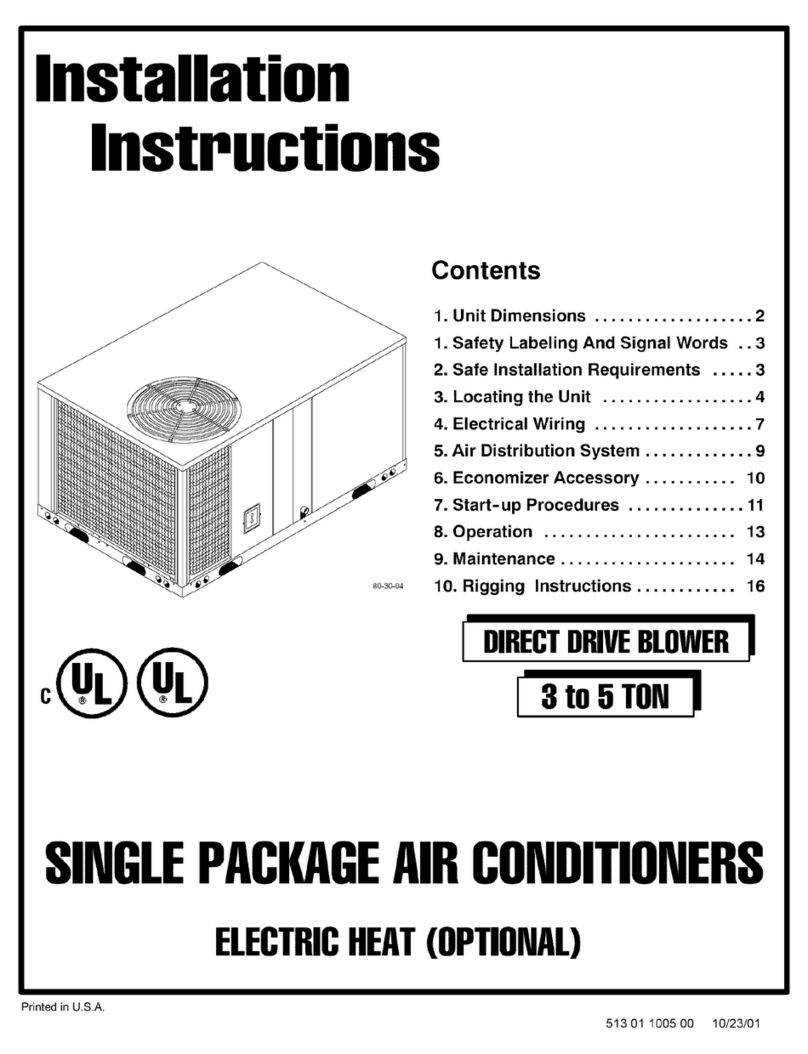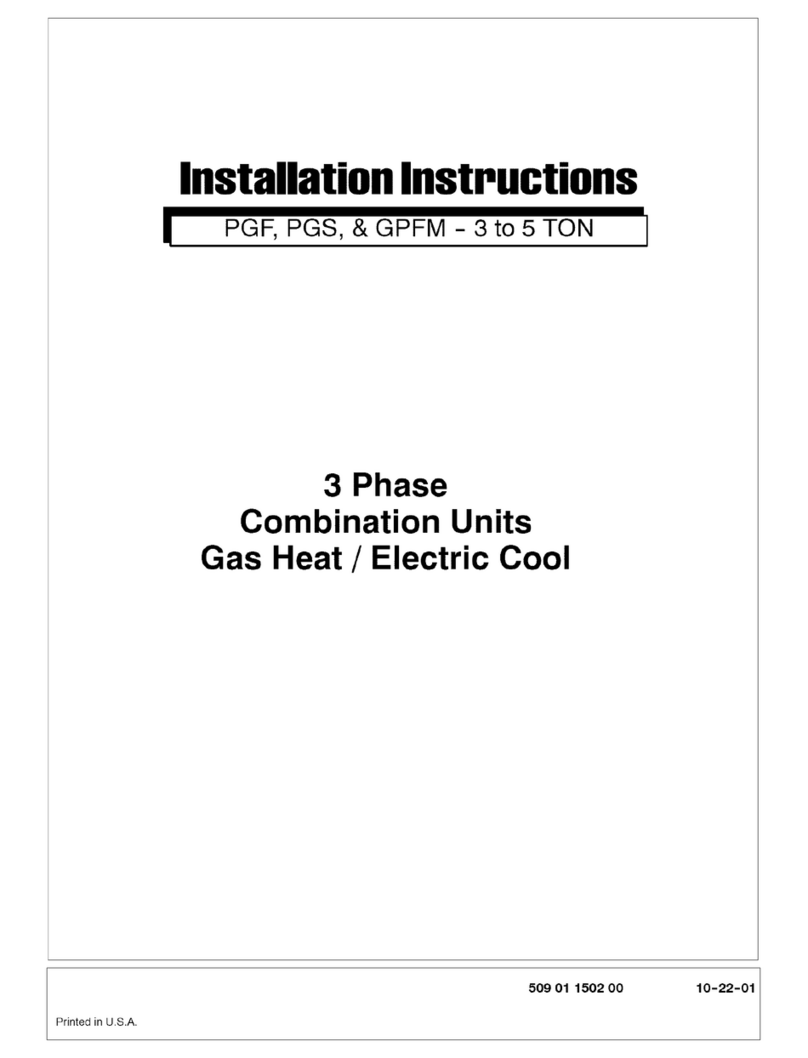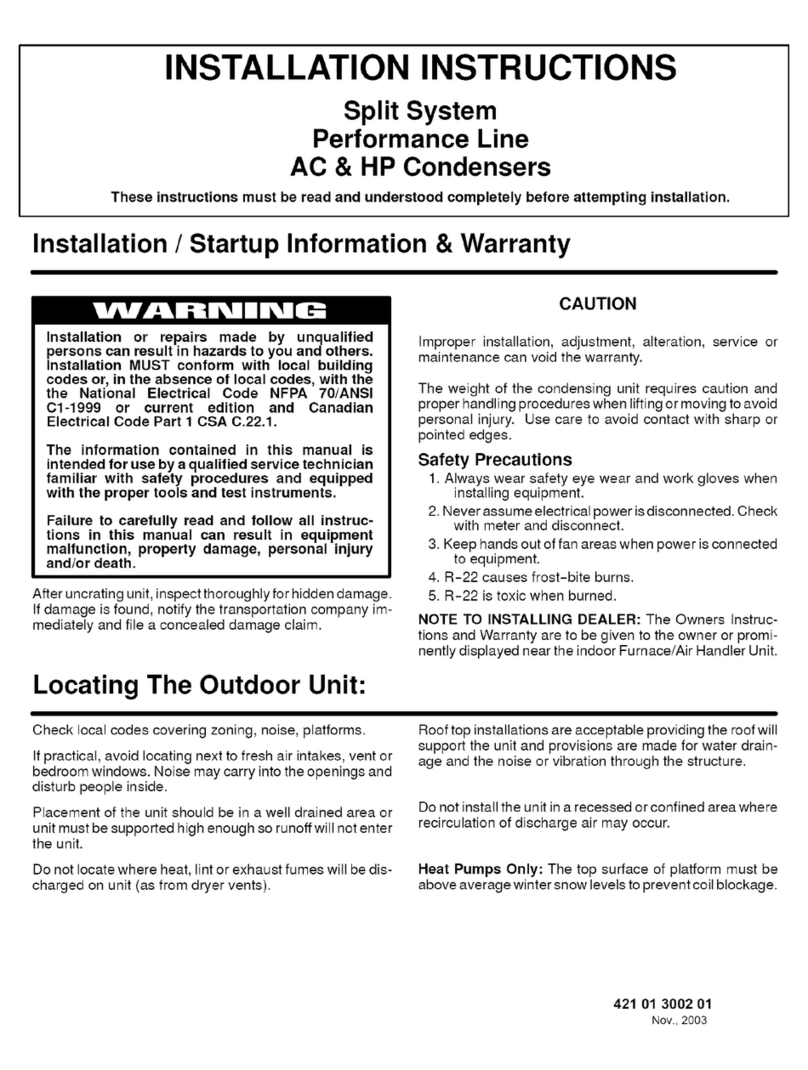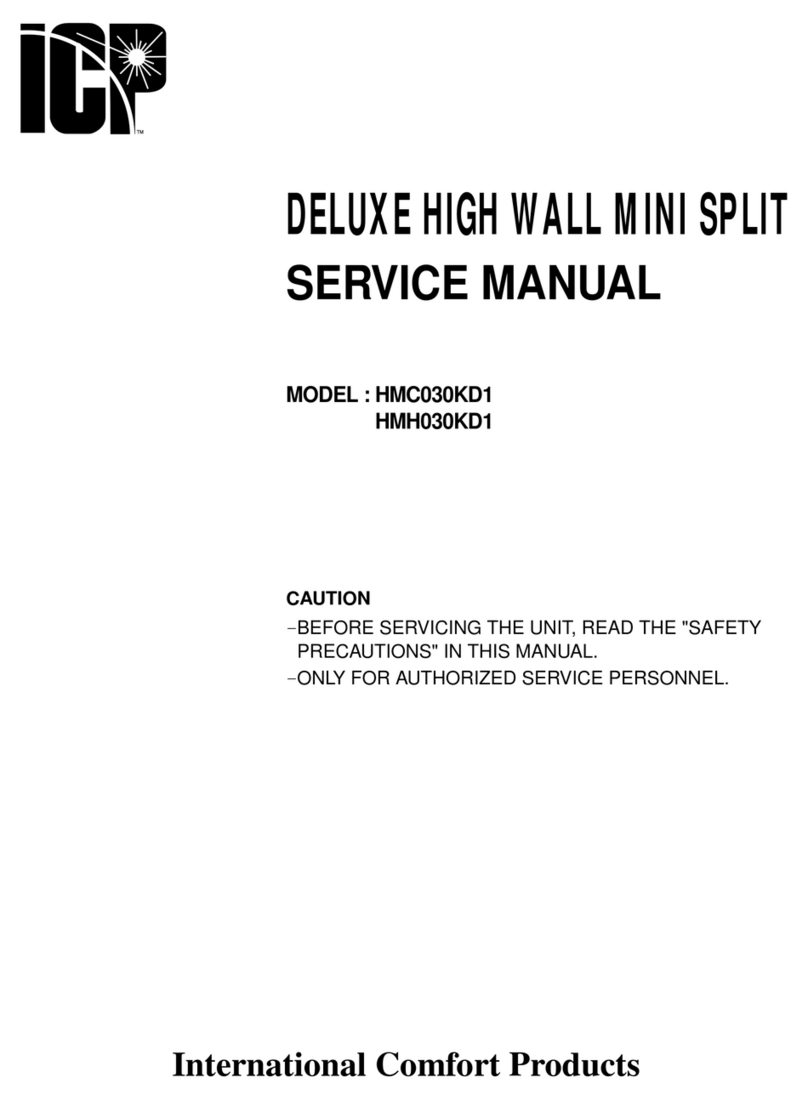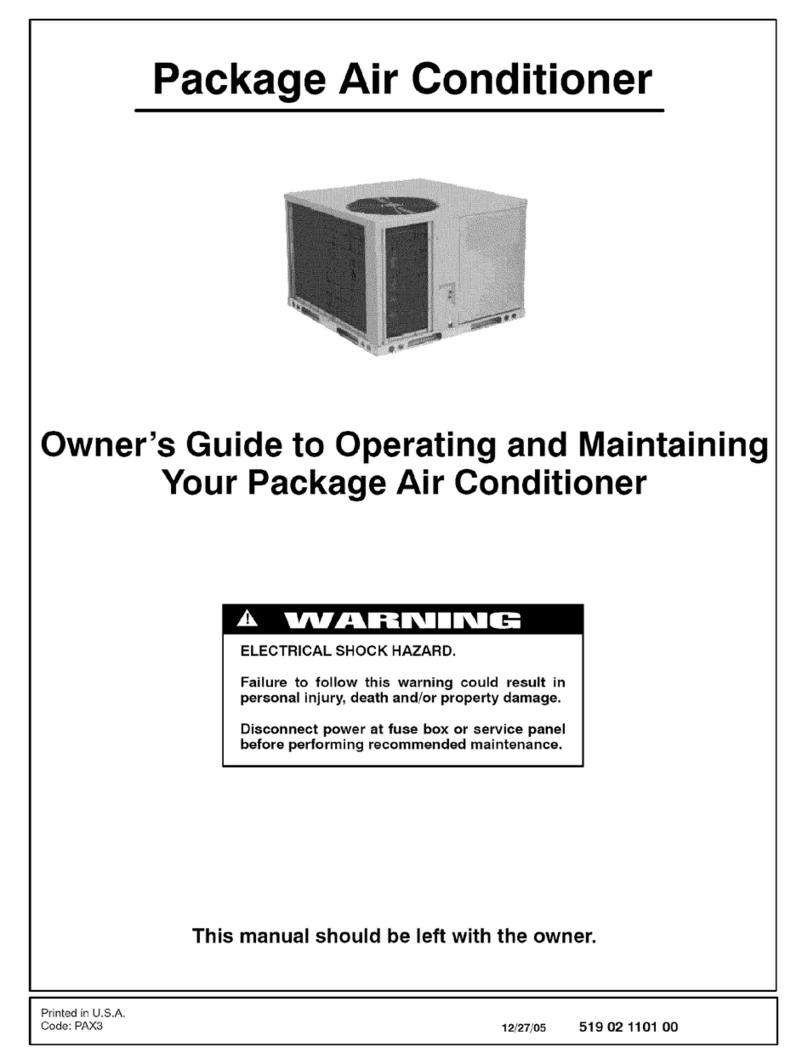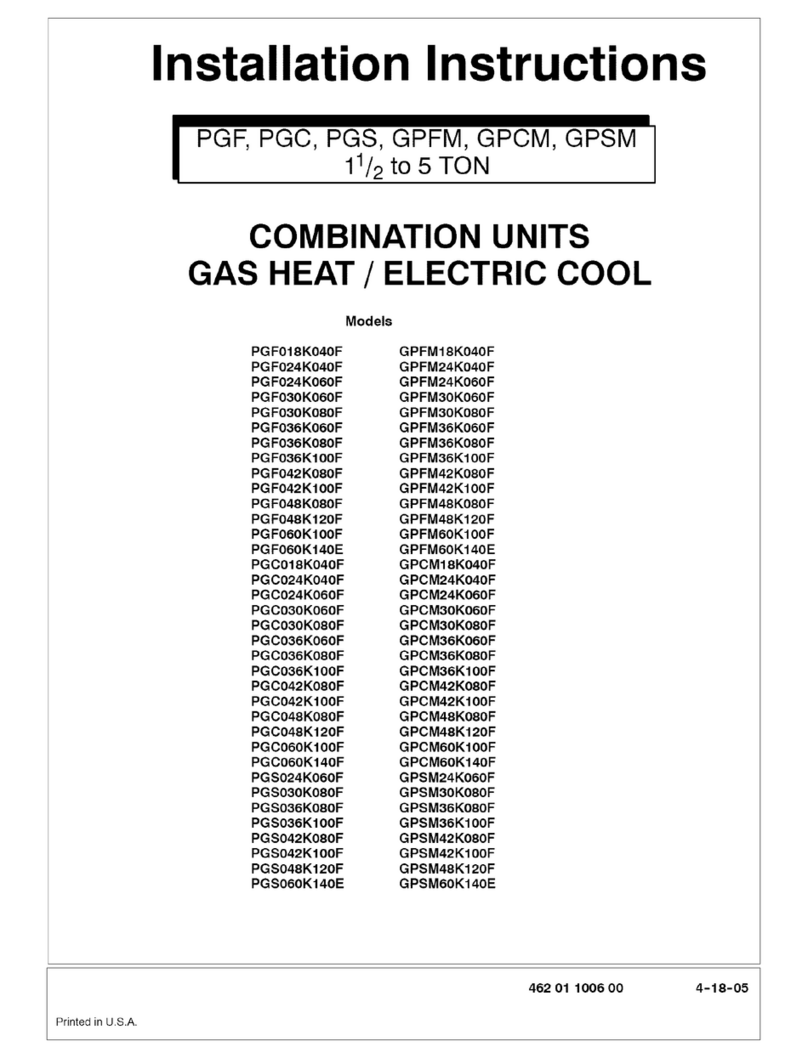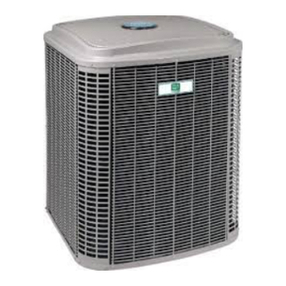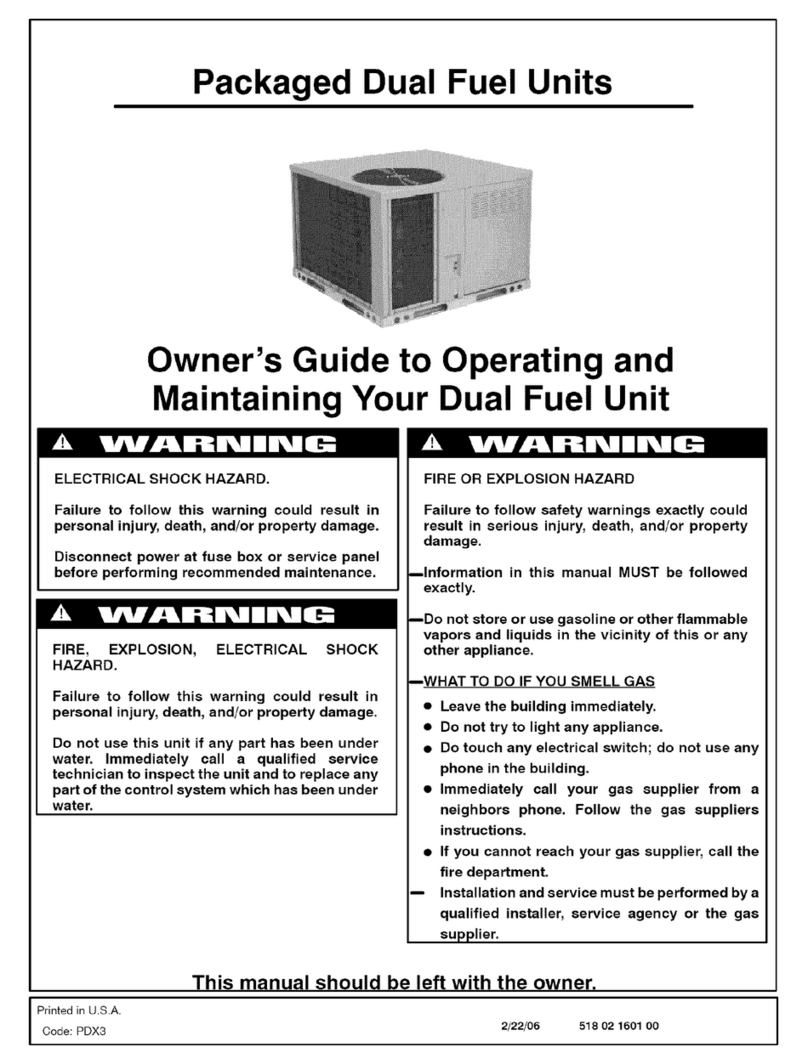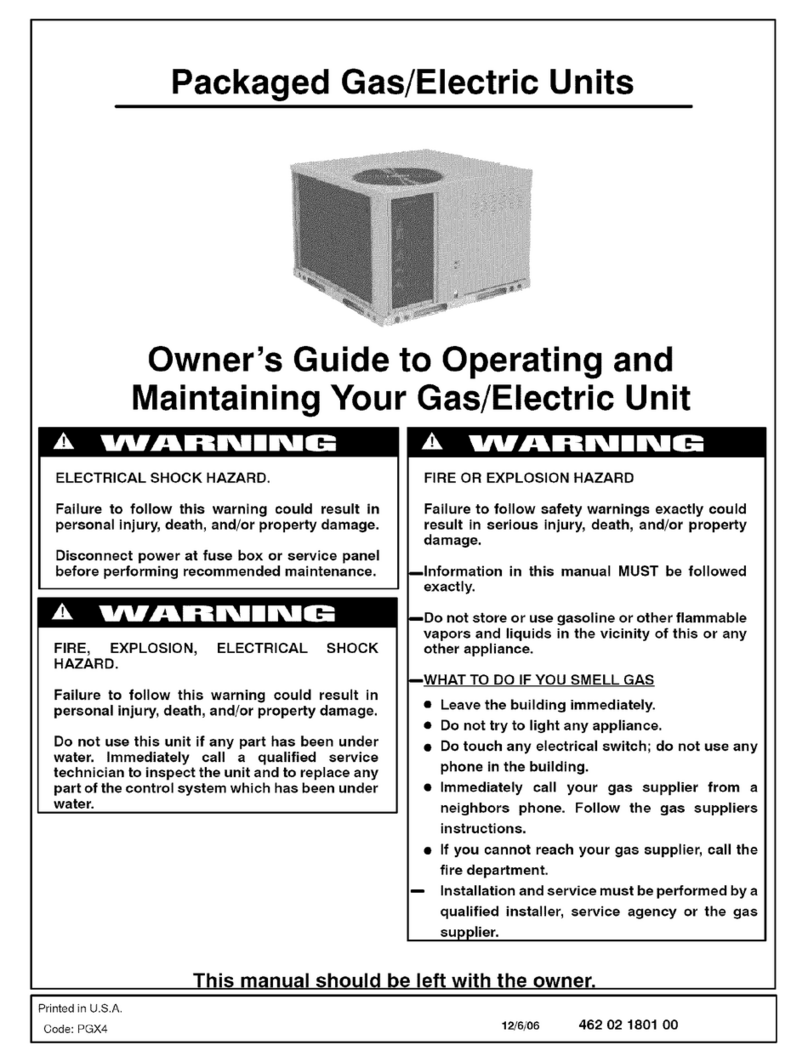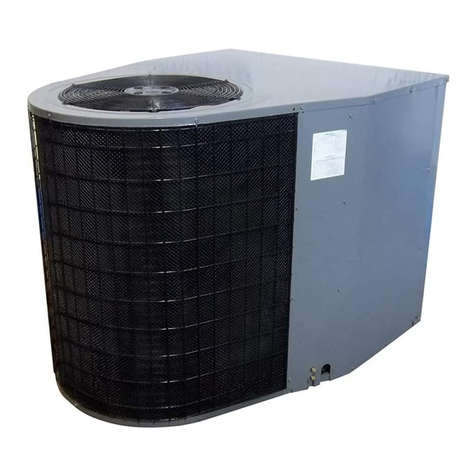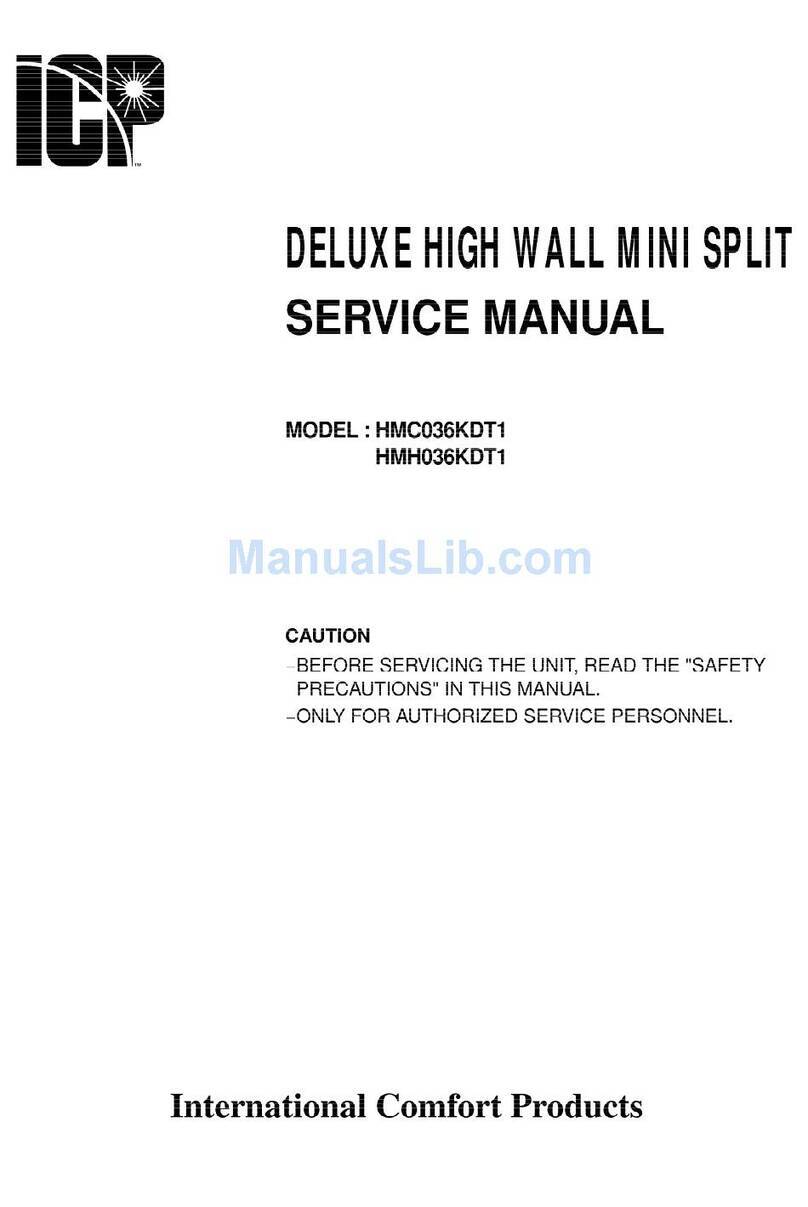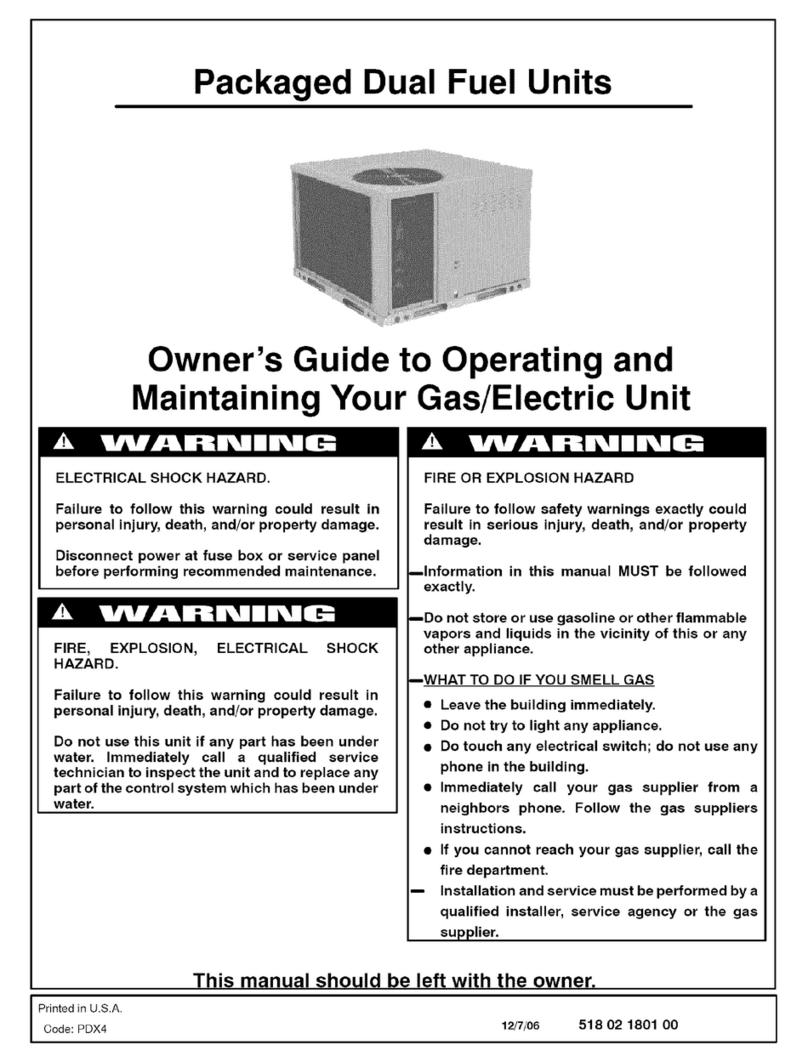Manufacturer reserves the right to discontinue, or change at any time, specifications or designs without notice and without inc
Printed in Israel Pg 1
Installation Start-Up and Service Instructions
CONTENTS
Page
SAFETY CONSDERATONS . . . . . . . . . . . . . . . . . . . . . . . . .1
GENERAL . . . . . . . . . . . . . . . . . . . . . . . . . . . . . . . . . . . . . . . . . 1-4
NSTALLAT ON . . . . . . . . . . . . . . . . . . . . . . . . . . . . . . . . . . . 4-11
ndoor Unit nstallation . . . . . . . . . . . . . . . . . . . . . . . . . . . . . 4
. . . . . . . . . . . . . . . . . . . . . . . . .6
Power Supply. . . . . . . . . . . . . . . . . . . . . . . . . . . . . . . . . . . . . . . .7
Leak Test . . . . . . . . . . . . . . . . . . . . . . . . . . . . . . . . . . . . . . . . . . . .7
START-UP . . . . . . . . . . . . . . . . . . . . . . . . . . . . . . . . . . . . . . . . . .11
System Checks. . . . . . . . . . . . . . . . . . . . . . . . . . . . . . . . . . . . .11
CARE AND MA NTENANCE. . . . . . . . . . . . . . . . . . . . . . . . .11
. . . . . . . . . . . . . . . . . . . . . . . . . . . . . . . . . .11
Indoor Units. . . . . . . . . . . . . . . . . . . . . . . . . . . . . . . . . . . . . . . .11
To Clean the ndoor Unit Front Panel . . . . . . . . . . . . . . .11
To Clean ndoor Coil. . . . . . . . . . . . . . . . . . . . . . . . . . . . . . . .11
. . . . . . . . . . . . . . . . . . . . . . . . . .11
SERVCE . . . . . . . . . . . . . . . . . . . . . . . . . . . . . . . . . . . . . . . . . . .11
TROUBLESHOOTNG. . . . . . . . . . . . . . . . . . . . . . . . . . . .12-15
SAFETY CONS DERAT ONS
Installing, starting up, and servicing air-conditioning equip-
ment can be ha ardous due to system pressures, electrical
components, and equipment location (roofs, elevated struc-
tures, etc.).
Only trained, qualified installers and service mechanics
should install, start-up, and service this equipment.
Untrained personnel can perform basic maintenance func-
tions such as cleaning coils. All other operations should be
performed by trained service personnel.
When working on the equipment, observe precautions in
the literature and on tags, stickers, and labels attached to the
equipment.
Follow all safety codes. Wear safety glasses and work
gloves. Keep quenching cloth and fire extinguisher nearby
when bra ing. Use care in handling, rigging, and setting bulky
equipment.
GENERAL
System Requirements
Consult local building codes and National Electrical
Code (NEC, U.S.A.) for special installation requirements.
Use only type G or C fuses.
Use single length power cable without extension.
Allow sufficient space for airflow clearance on condens-
ing units for wiring, refrigerant piping, and servicing
unit. See Fig. 1 and 2 for minimum required distances
between unit and walls or ceilings.
Indoor and outdoor units should be installed at a
Maximum line length of 50 ft, and
vertical separation of 30 ft.
Do not install indoor units near a direct source of heat
such as direct sunlight, steam or flame.
Before installing or servicing system, always turn off main
power to system and install lockout tag on disconnect.
There may be more than one disconnect switch. Electrical
shock can cause personal injury.
IMPORTANT: The Indoor unit & the inter units cable voltage
is 30 VDC
IMPORTANT: Each refrigerant line must be insulated
separately. See line sizing requirements in table 2.
Do not bury more than 36 in. of refrigerant pipe in the
ground. If any section of pipe is buried, there must be a
6 in. vertical rise to the valve connections on the outdoor
units. If more than the recommended length is buried,
refrigerant may migrate to the cooler buried section during
extended periods of system shutdown. This causes refriger-
ant slugging and could possibly damage the compressor at
start-up.
DFS2A/H 09,12,18
Duct Free Systems
Fig. 1B Outdoor Unit Clearances
Fig. 1A Outdoor Unit Clearances
These instructions cover the installation, start-up and servicing
of DFC2A/DFC2H outdoor and DFF2A/DFF2H indoor units
cooling only and heat pump duct free systems. See Table 1 for
parts included. See Tables 2 and 3 for Physical Data.
51302618915 0106
TOP (min.)
2 (0.6m)
LEFT (min.)
6 (0.15m)
RIGHT (min.)
2 (0.6m)
FRONT (min.)
2 (0.6m)
REAR (min.)
6 (0.15m)
Max. cable length. Total voltage drop should not exceed 1V.
Therefore max. length:
For #18 AWG 24.3 Feet (7.4 m)
For #16 AWG 37.7 Feet (11.5 m)
For #14 AWG 50.0 Feet (18 m)
Outdoor Units . . . .
Outdoor Unit Installation . . .
Air Filters for Indoor Units
LEFT(min.)
6 (0.15m)
TOP(min.)
2 (0.6m)
REAR(min.)
6 (0.15m)
RIGHT(min.)
2 (0.6m)
FRONT(min.)
2 (0.6m)
Cooling Model Heat Pump
DFS2A309J1ADFS2H309J1A
DFS2A312J1A DFS2H312J1A
DFS2A318K1ADFS2H318K1A
421 01 9217 00












